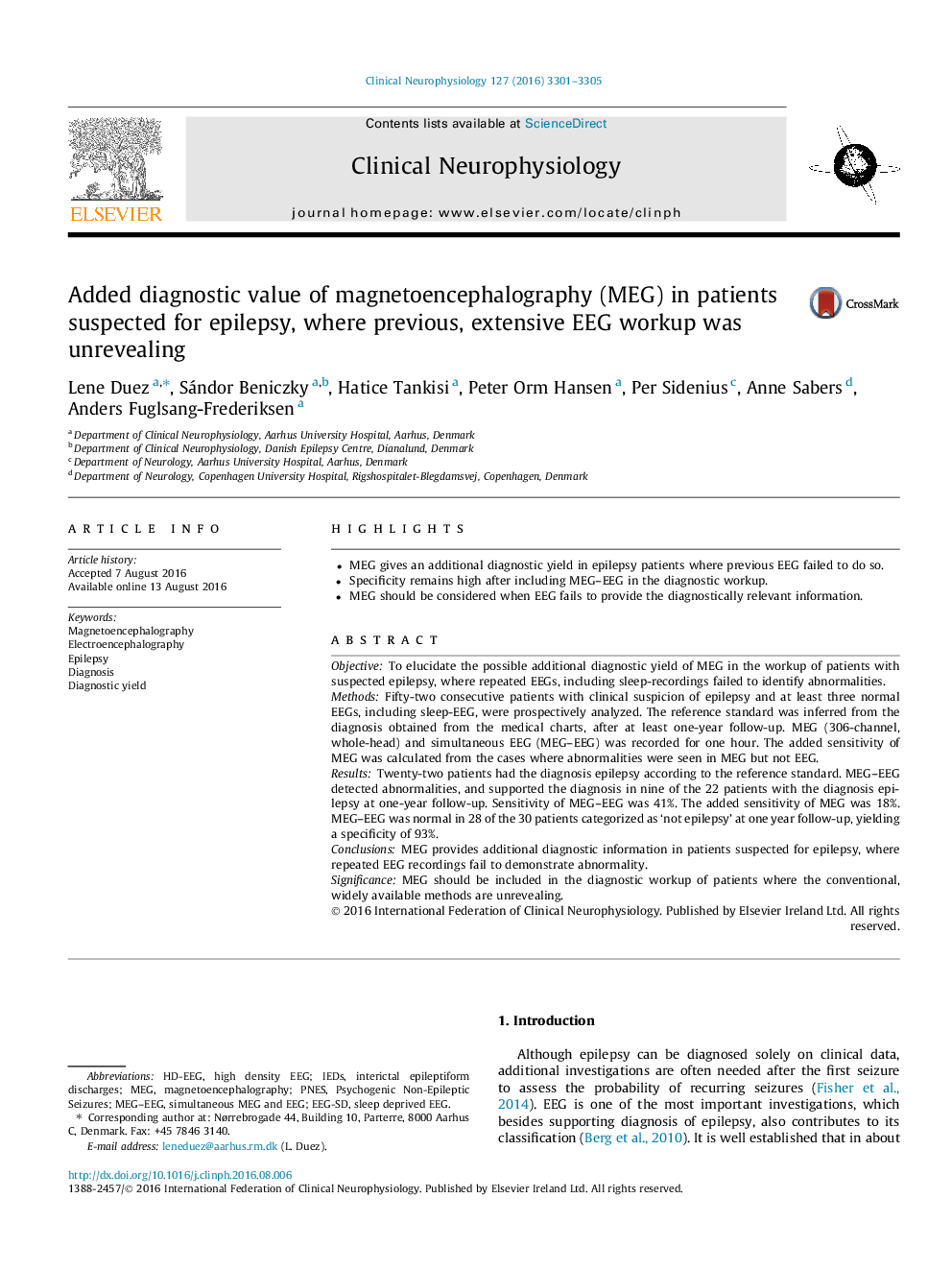| Article ID | Journal | Published Year | Pages | File Type |
|---|---|---|---|---|
| 5627864 | Clinical Neurophysiology | 2016 | 5 Pages |
â¢MEG gives an additional diagnostic yield in epilepsy patients where previous EEG failed to do so.â¢Specificity remains high after including MEG-EEG in the diagnostic workup.â¢MEG should be considered when EEG fails to provide the diagnostically relevant information.
ObjectiveTo elucidate the possible additional diagnostic yield of MEG in the workup of patients with suspected epilepsy, where repeated EEGs, including sleep-recordings failed to identify abnormalities.MethodsFifty-two consecutive patients with clinical suspicion of epilepsy and at least three normal EEGs, including sleep-EEG, were prospectively analyzed. The reference standard was inferred from the diagnosis obtained from the medical charts, after at least one-year follow-up. MEG (306-channel, whole-head) and simultaneous EEG (MEG-EEG) was recorded for one hour. The added sensitivity of MEG was calculated from the cases where abnormalities were seen in MEG but not EEG.ResultsTwenty-two patients had the diagnosis epilepsy according to the reference standard. MEG-EEG detected abnormalities, and supported the diagnosis in nine of the 22 patients with the diagnosis epilepsy at one-year follow-up. Sensitivity of MEG-EEG was 41%. The added sensitivity of MEG was 18%. MEG-EEG was normal in 28 of the 30 patients categorized as 'not epilepsy' at one year follow-up, yielding a specificity of 93%.ConclusionsMEG provides additional diagnostic information in patients suspected for epilepsy, where repeated EEG recordings fail to demonstrate abnormality.SignificanceMEG should be included in the diagnostic workup of patients where the conventional, widely available methods are unrevealing.
